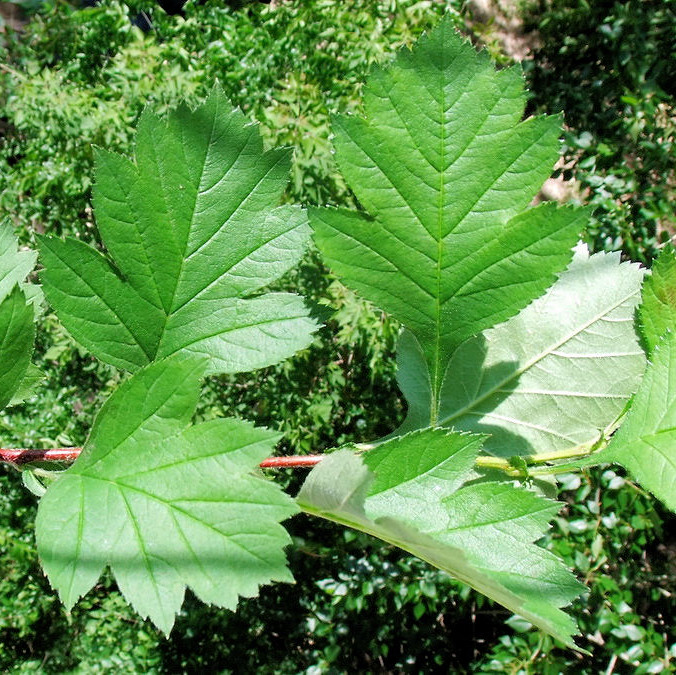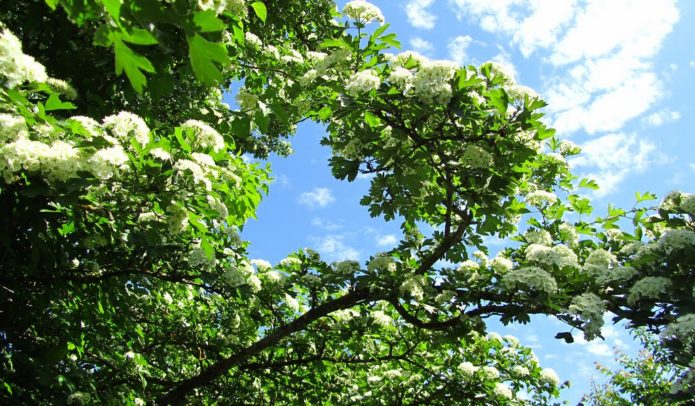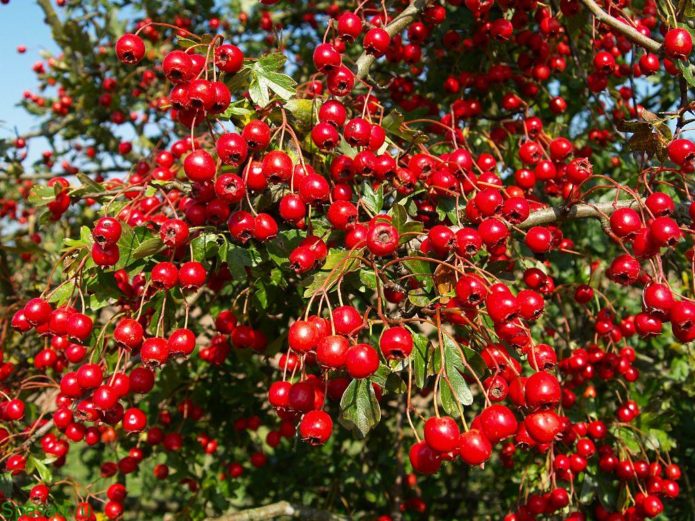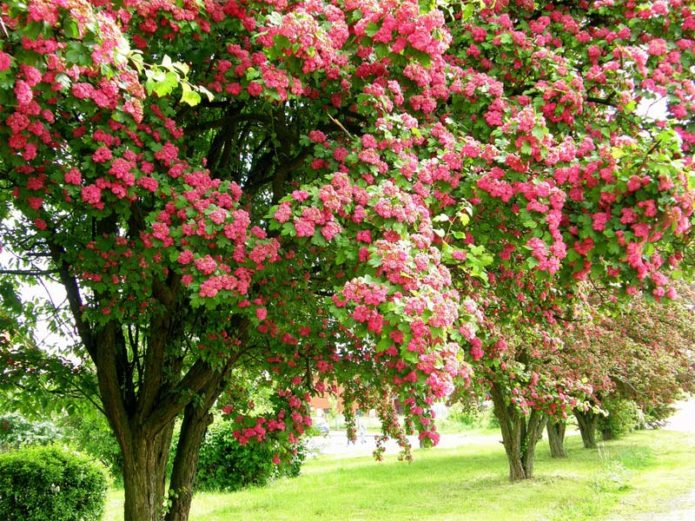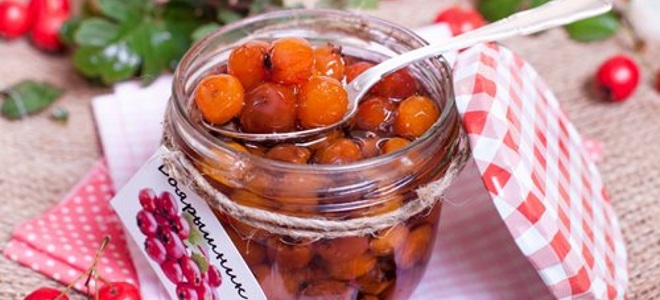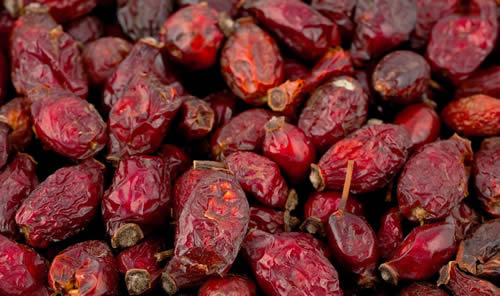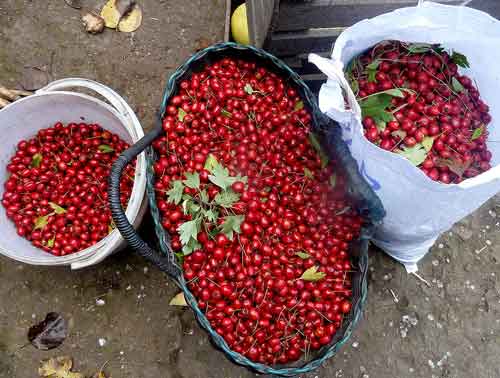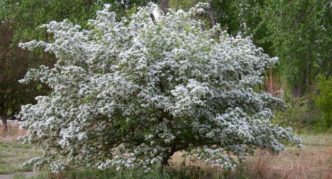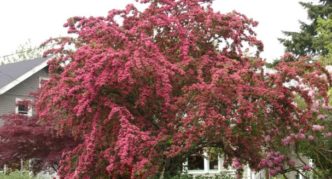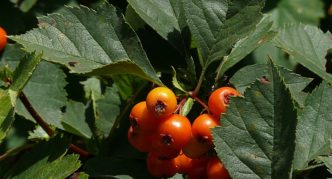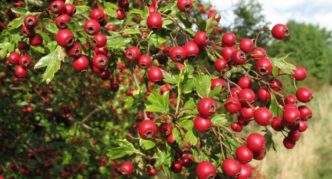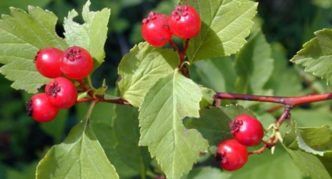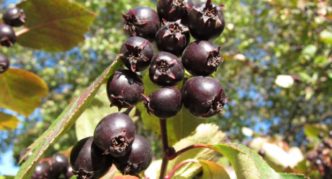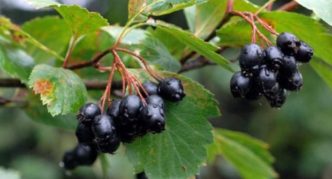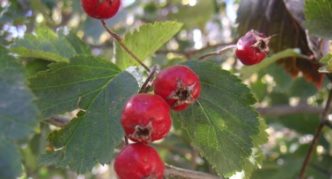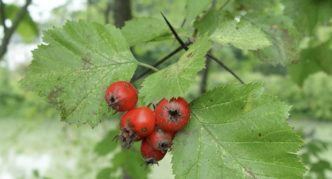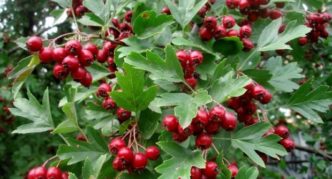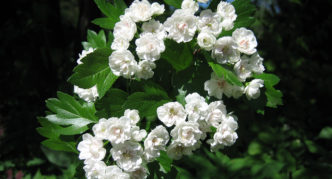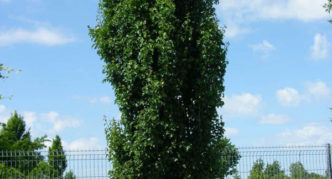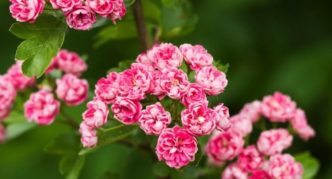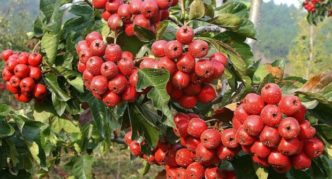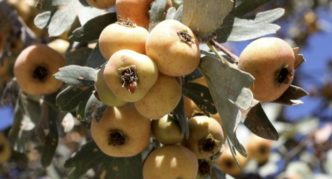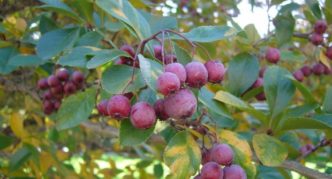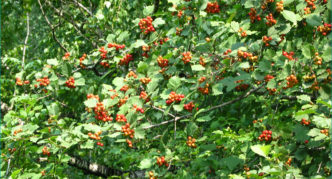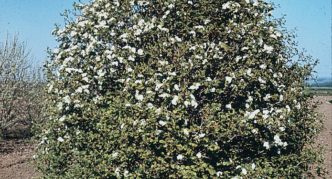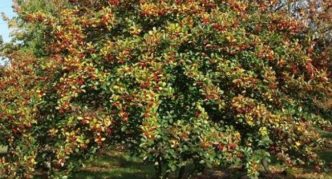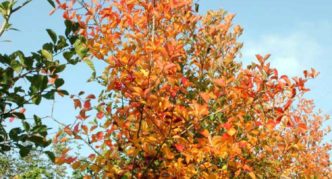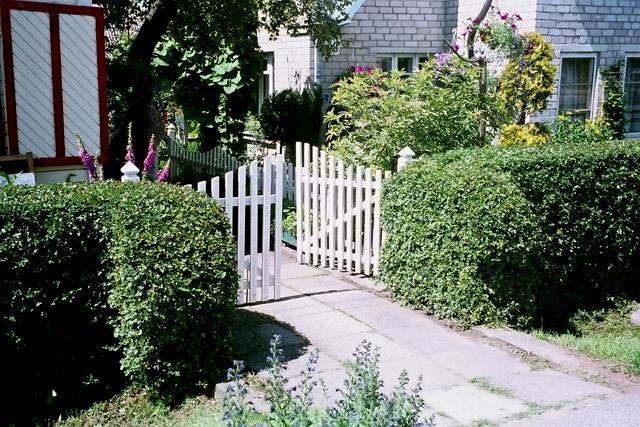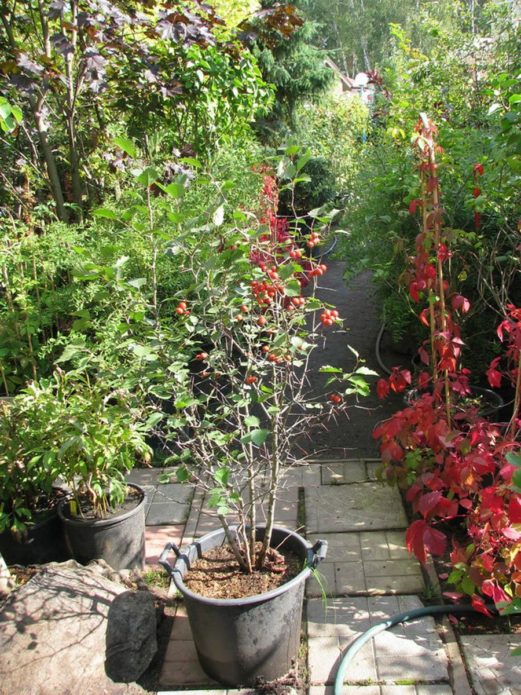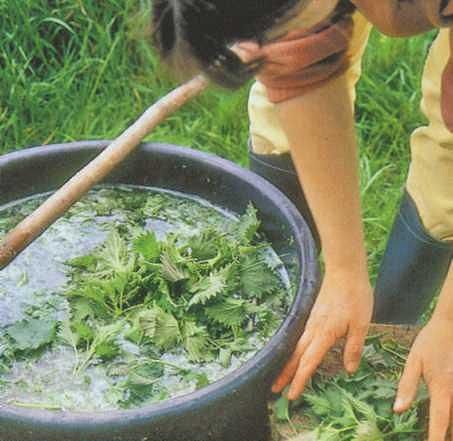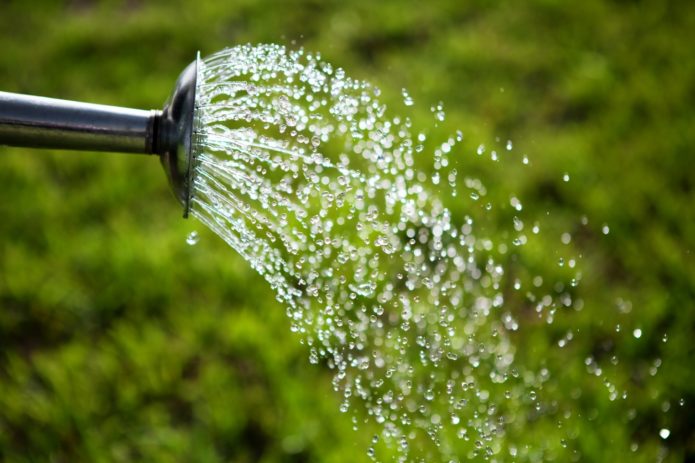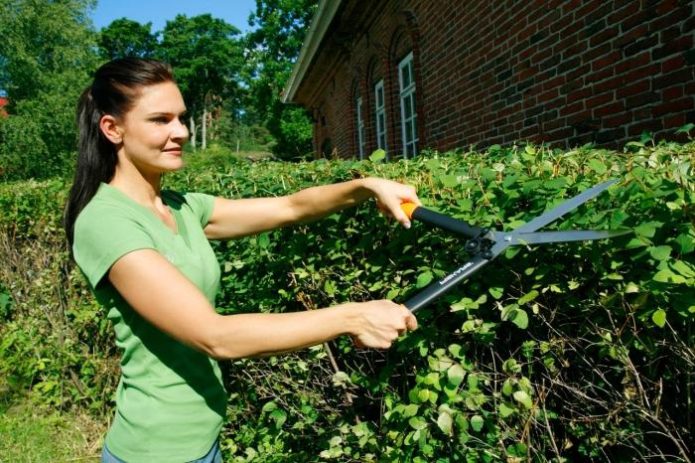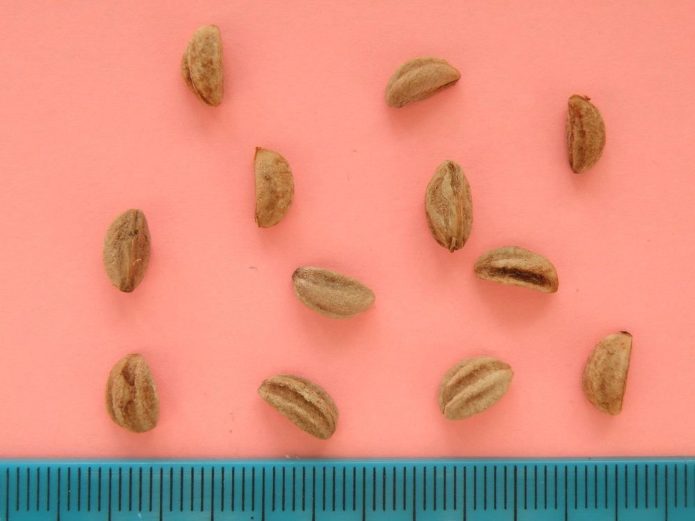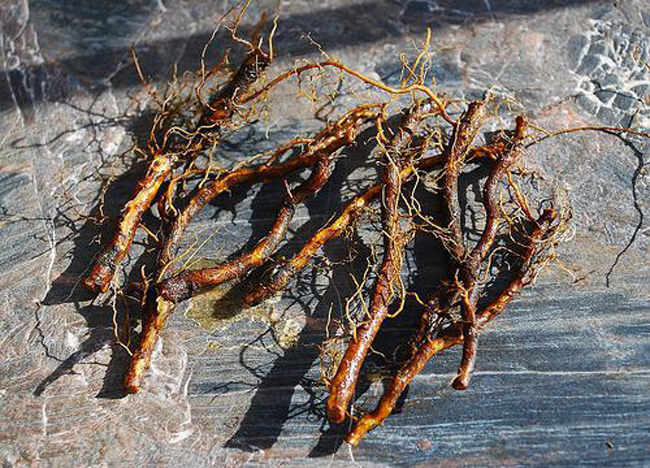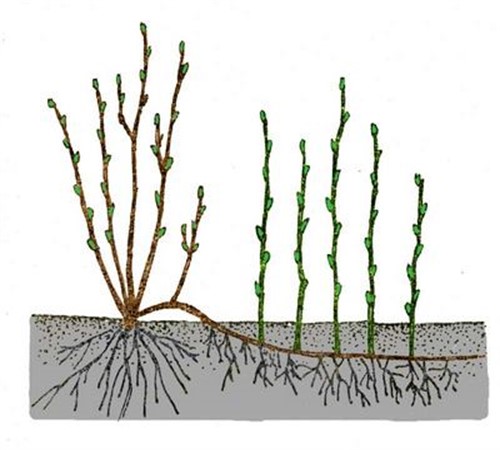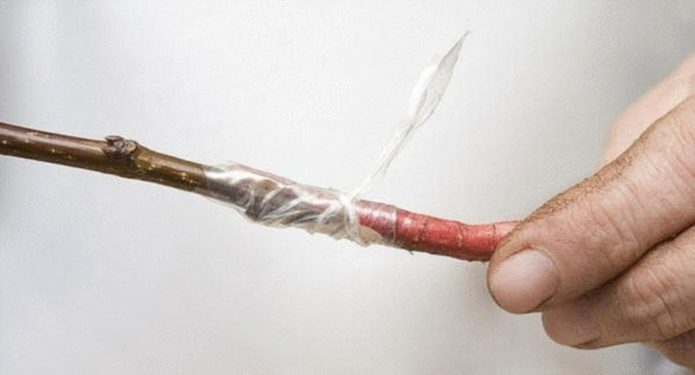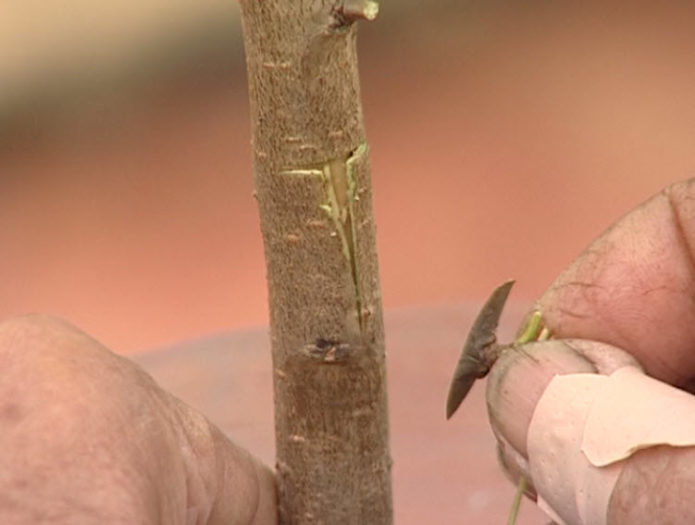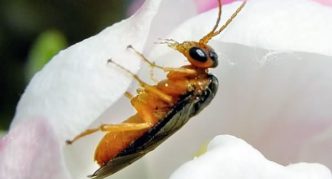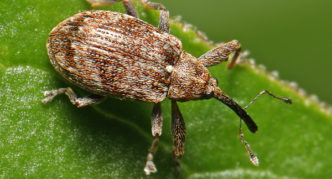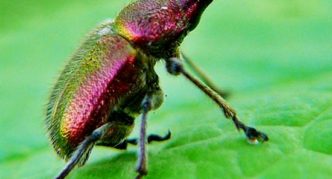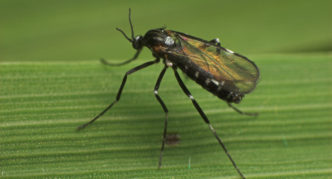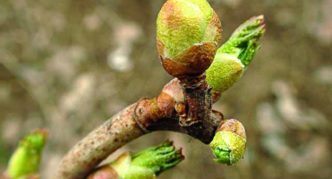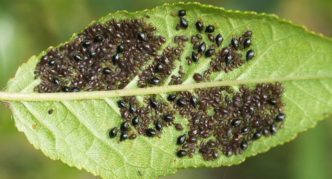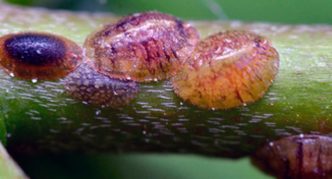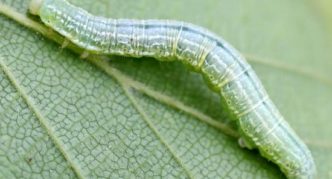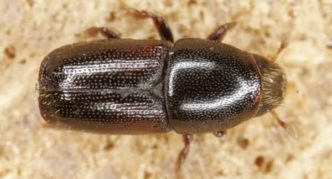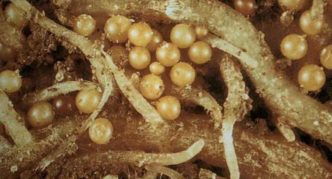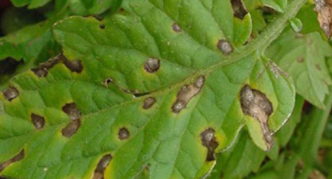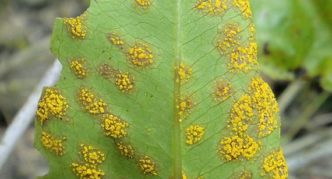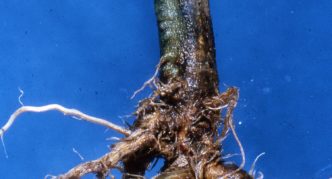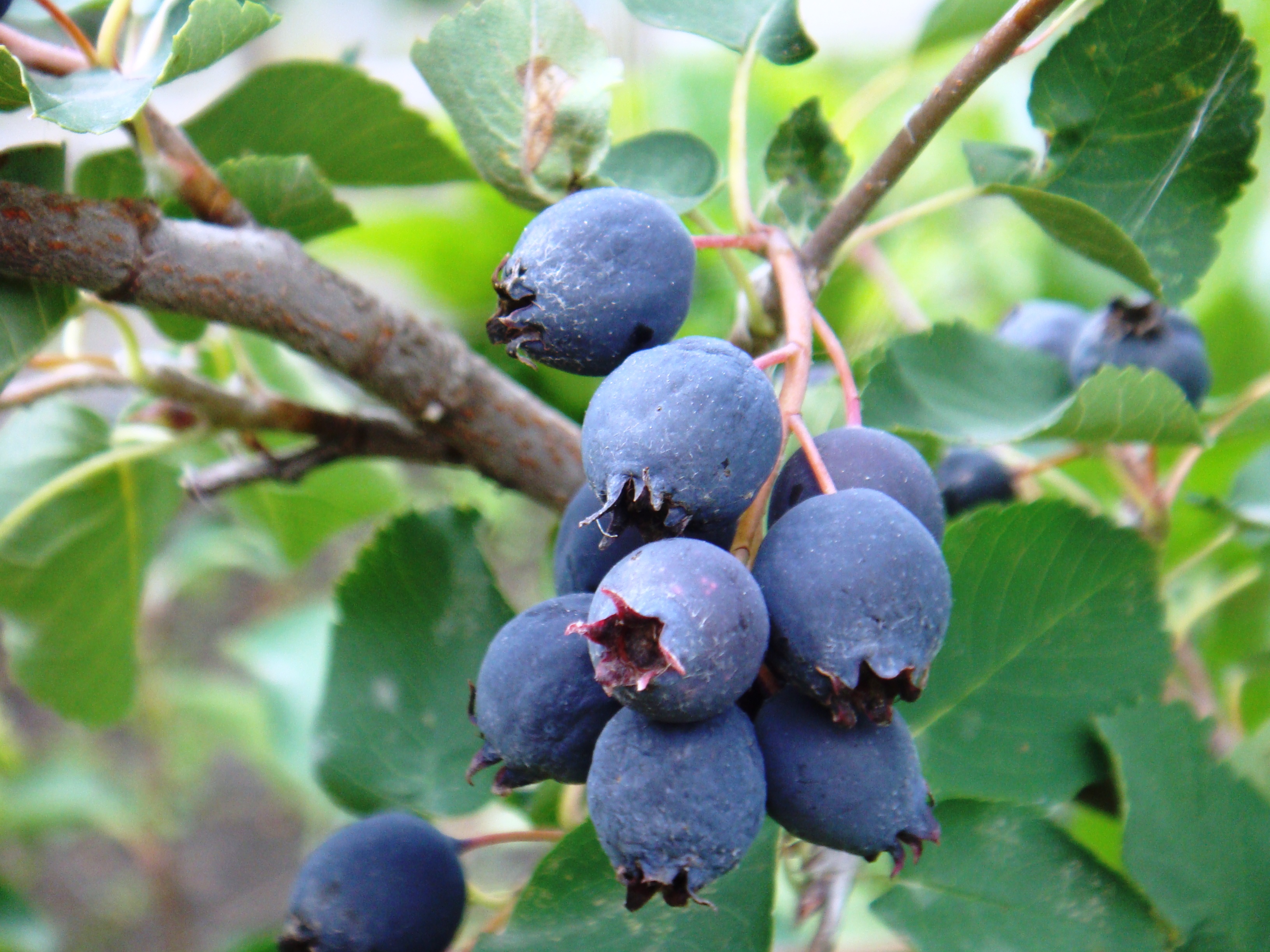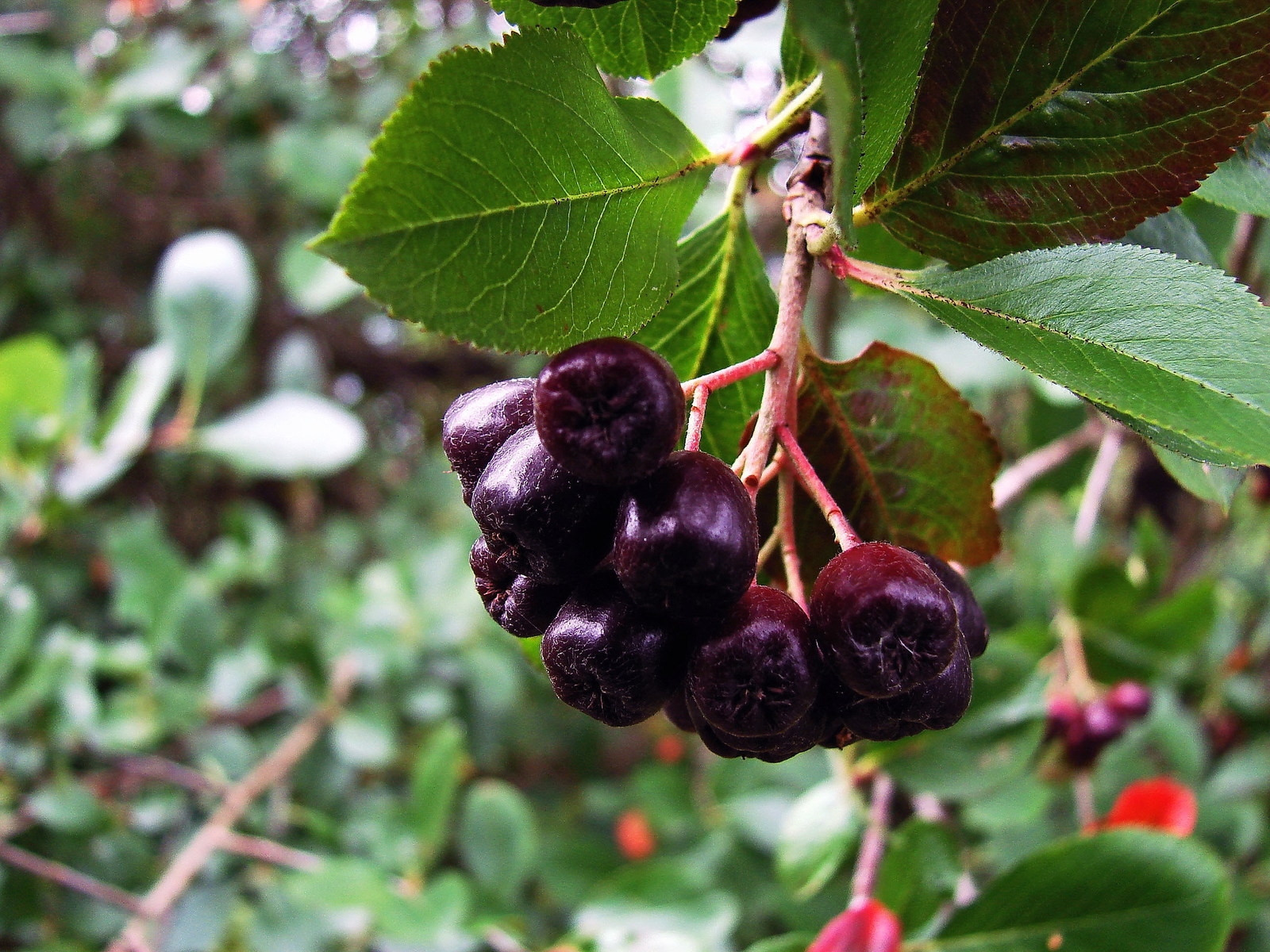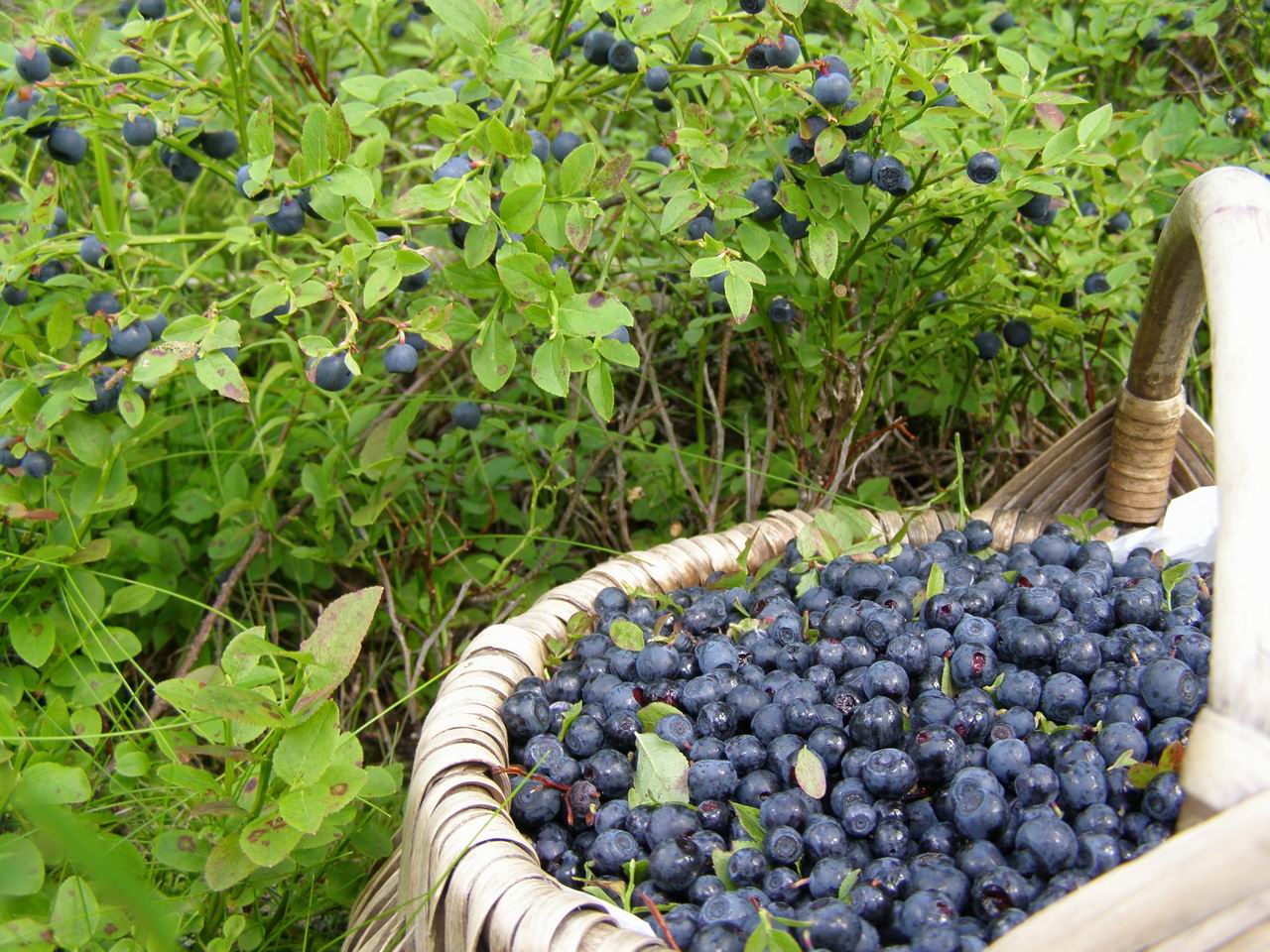Hawthorn is a common plant widely used in landscape design. It also has many health benefits, so gardeners who grow it in their backyards can kill two birds with one stone. The plant is unpretentious, it is very difficult to ruin it. Growing hawthorn is within the power of even a novice gardener.
Content
What does hawthorn look like and what is useful?
Hawthorn (Crataegus) is a fairly numerous genus of plants that belongs to the Pink family. Its natural habitat is the Northern Hemisphere. In areas with a temperate climate, hawthorn is found almost everywhere. Most of its species can be found in Europe and North America.

Hawthorn is a numerous genus of plants, widespread in the temperate climate of the Northern Hemisphere
A beautiful legend is connected with the origin of the name of the hawthorn. According to her, the boyar's young daughter, with whom a foreign merchant fell in love, rejected his advances, remaining faithful to her fiance, who had gone to war. Then he kidnapped her, but the girl managed to escape. When she reached the tree under which she met her betrothed, she prayed for protection. The barrel opened and she hid inside. And in the spring, the tree was covered with snow-white inflorescences, becoming like a wedding dress. Thus, the girl's soul sent a sign to her beloved. According to another version, the girl died under a hawthorn bush, stabbing herself with a dagger. She preferred death to life in captivity with an unloved person.
Hawthorn is a shrub or a small graceful tree that grows up to 2.5-7 m. The bark is chocolate brown with a reddish tint. With age, it turns gray and flakes off in layers. Even without pruning, its dense crown takes on an almost regular spherical shape. The branches are covered with densely spaced thorns about 5 cm long.
Leaves in different species can be whole or dissected, as well as lobed. Basically, the leaf plate is dark green, but a gray-silver or yellowish tint is also found. In autumn, the hawthorn looks very impressive. The leaves are painted in all sorts of shades of yellow, orange-red, purple. The average length of a leaf is 2–6 cm; on a branch they are arranged in a spiral.
The hawthorn is decorative during flowering. It falls on the last decade of May or the very beginning of June. In nature, its flowers are simple, white or pale pink, breeders have bred varieties with crimson, bright scarlet petals, as well as double ones. The buds are collected in dense inflorescences in the form of an umbrella or shield. The smell is faint, almost imperceptible.This is good, because it is not very pleasant. One of the most common associations it causes is stale rotten fish.
Hawthorn fruits are small apples with yellowish, red-orange, scarlet, dark purple or even almost black skin. They vary greatly in shape and size. Each contains from one to five seeds. In principle, it is possible to eat fruits, but they cannot boast of excellent taste. The pulp is sweet and sour, with a noticeable "mealy" aftertaste. The harvest ripens in August or September, even completely ripe fruits can sag on the branches until spring without crumbling.
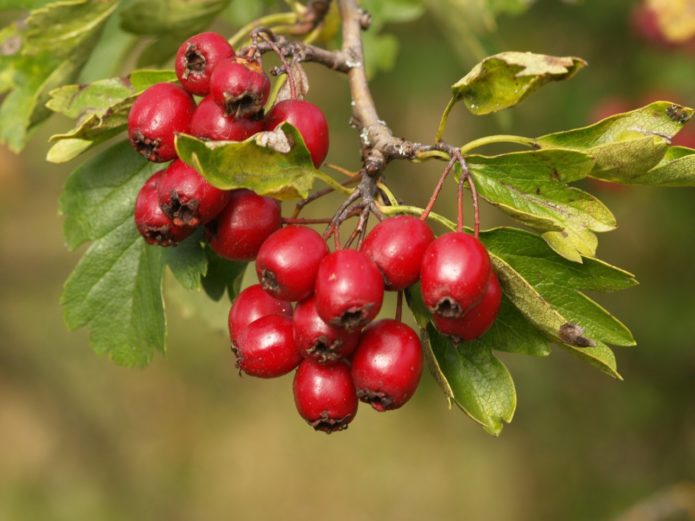
The fruits of the hawthorn are medium-sized, but the plant has a good yield and a long productive period.
The plant cannot boast of growth rate and early maturity. The first crop is harvested only 12–15 years after planting the seedling in a permanent place. But the hawthorn belongs to the category of long-livers. The tree will bloom and bear fruit for 300-400 years. Average yield - 75 kg of fruits from an adult plant.
The extreme unpretentiousness of the hawthorn determines its high popularity among those who are engaged in landscape design. This plant is widely used for landscaping city parks and squares, successfully adapting to unfavorable environmental conditions. In a garden plot, a hawthorn can be used to form a hedge. It not only looks very attractive, but also absorbs noise.
Video: hawthorn in landscape design
Experienced gardeners use the plant as a rootstock for elite varieties of apple and pear trees that do not have sufficient frost resistance. Its compact dimensions make it possible to further form a lath out of it. And also hawthorn is a good honey plant, attracting pollinating insects to the site.
Fresh hawthorn fruits are rarely eaten. But homemade products are very tasty. Jam, jam, jam, compotes are made from it, marshmallows and jelly are made.
Flowers, leaves and fruits of hawthorn are widely used in folk medicine, mainly for problems with the heart and blood vessels. They are valued for their high content of vitamins A, C, P, unsaturated fatty and fruit acids, tannins and fructose.
The drugs help to normalize palpitations and reduce high blood pressure. They strengthen the walls of blood vessels, expand them. Thus, the supply of oxygen to organs and tissues is improved, metabolism is normalized, sleep problems and causeless dizziness disappear. Also, these funds have a positive effect on the composition of the blood, reduce cholesterol levels.
But the benefits of hawthorn are not limited to this. Preparations from leaves and flowers are prescribed for problems with the gastrointestinal tract, thyroid gland, anemia, and decreased immunity. When taken as directed, no side effects are observed, even with prolonged use. But an overdose leads to depression of the central nervous system. Hawthorn is contraindicated for pregnant and lactating women, children under 12 years of age, hypotensive.
Video: health benefits of hawthorn
Description of varieties and varieties of plants
In nature, there are about 400 species of hawthorn. Much less “domesticated” by humans. Basically, the following varieties are found in "captivity". All of them are valued for their decorative effect, consistently high yield and frost resistance.
- Common or prickly. A tree with a height of 4–6 m. On the territory of Europe it is found almost everywhere. The leaf plates are three-lobed, without edge. The front side is dark green, the inside is salad-colored. There are relatively few spines, the average length is 1.5–2 cm. The flowers are white or pinkish, 1.5 cm in diameter. The fruits are round or slightly elongated, brick-colored. Each contains 2-3 seeds. The growth rate does not differ, it tolerates pruning very well and holds its shape. The breeders bred the varieties Paul's Scarlet (a compact, non-fruiting tree with crimson double flowers) and Variegatum (up to 3 m high, the leaves are covered with small white specks and dots).
- Altaic. Natural habitat - Central and Central Asia. The height of the shrub is 4–6 m. It is undemanding to the quality of the soil, in nature it even settles on practically bare stones. The leaves are whole, egg-shaped, smooth, cast bluish. The flowers are snow-white. Fruits are yellowish-orange, spherical. Compared to other varieties, it differs in early maturity. The harvest can be expected in the sixth year.
- Blood red or Siberian. Shrub 3–3.5 m high. Grows extremely slowly. Young shoots are bright scarlet, then gradually turn brown. The spines are numerous, thick, 4–5 cm long. The leaves are in the form of a wide rhombus, with large denticles along the edge. The flowers are white, the anthers are purple. The fruits are elongated, deep red. The pulp is pale yellow, watery.
- Fan-shaped. Distributed in North America and Russia (Northwest region). Multi-stemmed shrub, up to 5 m high. Curved thorns, 5–6 cm long, very densely arranged. Leaves in the form of a diamond, on long petioles. The flowers are large (up to 2 cm in diameter), snow-white. The fruits are bright scarlet, juicy, elongated. Ideal for forming hedges.
- Daursky. It is found mainly in Eastern Siberia, the Far East, Mongolia, and northern China. Shrub up to 4–5 m high. The bark is brownish-purple. The spines are frequent, up to 2 cm long. The leaves are smooth, elliptical, with a pointed tip. The petals are white with a crimson base. The fruits are round, orange-red.
- Douglas. Grows in North America. Differs in size. The height of the tree is 10–13 m, the diameter of the trunk is about 0.5 m. The crown is very dense, the shoots are drooping, almost without thorns. Leaves are oval, with short petioles. The petals are white, with a yellowish or pinkish tint. Fruits are very dark purple in color, appear black from a distance. The pulp is pale yellow, sweetish.
- Meat green. It can be found in Kamchatka, the Kuril Islands, Sakhalin, and Japan. The tree is very graceful, 3-4 m high. The bark is yellowish-beige, with a lilac tint. Spines up to 1.5 cm long. Leaves are multi-lobed. The flowers are snow-white, with inky-lilac anthers on the stamens. The fruits are almost black, with a gray waxy coating, round. The pulp is salad-colored.
- Large anthered or large spiny. It is very widespread in the United States and Canada. The height of the tree is 4–6 m. Shoots are glossy, brownish-gray. The spines are curved, up to 10–12 cm long. The blossoming leaves are dull red. Then it changes to deep green, and in the fall - to yellow-orange. The flowers are white. Apple-shaped fruits, small. The skin is dark scarlet, the flesh is yellowish brown.
- Softish or semi-soft. It is valued mainly for the taste of the fruit. In nature, it grows exclusively in North America. The height of the tree is up to 8 m, the bark is pale gray, with a greenish tint. Spines 7-10 cm long. Leaves are oval, three-lobed. The flowers are very large, up to 2.5 cm in diameter. The fruits are orange-red, the flesh is pale yellow.
- Monopest. It is found not only in regions with a temperate climate, but also in the subtropics (North Africa, Australia, New Zealand). In mild conditions, it blooms twice a year, in spring and in the middle of winter. Prefers an alkaline clay substrate. The height of the tree is 4–5 m, the crown is elongated, pyramidal.The branches are reddish, there are few thorns. The leaves are whole, cast in olive, the edge is carved with large teeth. The flowers are snow-white, with reddish anthers. The hawthorn is the basis for most breeders' experiments. The most famous hybrids are Plena (double white flowers), Stricta (elongated crown that looks like a column), Rosea Flore Pleno (dark crimson double flowers).
- Periston cut. Distributed in the Far East, in China. Shrub up to 3 m high. Likes moist soil, settles mainly along the banks of rivers and lakes. The bark is dark gray, brownish on young shoots. Leaves on long petioles, deeply dissected. White petals gradually turn pink. Fruits with a bright scarlet skin, pear-shaped, covered with multiple whitish dots. The pulp is also red.
- Pontic. Grows in Turkey, Iran, Central Asia, the Caucasus. The height of the tree is 8–10 m, there are no thorns. Leaves are grayish-green, on very short petioles, dissected into five lobes. Inflorescences are small. Fruits are lime-colored, very large (up to 3 cm in diameter), as if faceted. The pulp is juicy, sweet.
- Shportsovy. Originally from the eastern United States. The height of the tree is 6–8 m. The crown is spreading, the shoots are drooping. The spines are curved, long (up to 10 cm). The leaves are whole, dark green, along the edge are weakly expressed teeth. The flowers are snow-white. Fruit color varies from salad green to light red.
- Maksimovich. Differs in decorativeness. The height of the tree is 4–6 m, the crown is elliptical, elongated. There are almost no thorns. The leaves are medium-sized, diamond-shaped. Flowering is short, lasts 10-12 days. The flowers are large, snow-white. Fruits up to 2 cm in diameter, bright scarlet. The crop ripens early enough, in mid-August. The plant tolerates pruning practically without damage to itself.
- Arnold. His homeland is North America, but he takes root very well in Siberia. It is appreciated for the high content of vitamin C in fruits and for its yield. The height of the shrub is 4–5 m. The thorns are 8–10 cm long. The fruits are almost round, orange-yellow, very large (up to 3 cm in diameter). At the apex, they are covered with soft whitish “bristles”. Having matured, this hawthorn quickly falls off.
- Slatey. The height of the tree is up to 7 m. The crown is very dense, slightly asymmetrical. The side shoots are slightly numb, so it looks like a tent. The fruits are bright scarlet, round, the yield is very high. A popular breeding hybrid is Splendens, it looks very decorative in autumn. The leaves change color to a rich orange, glossy scarlet fruits do not fall off for a long time.
- The black. Height up to 3-4 m. Shoots are brick-colored. The spines are short (up to 1 cm), few in number. The leaves are elliptical, the inside is covered with a short whitish "pile". White flowers gradually turn pink. Fruits are black, glossy, almost round.
Photo gallery: varieties and varieties of hawthorn grown in garden plots
- Common hawthorn is a very common plant in the Northern Hemisphere.
- The common hawthorn Paul's Scarlet is one of the most popular hybrids bred by breeders
- Altai hawthorn is distinguished by its undemanding soil quality and early maturity
- The blood red hawthorn got its name from the color of young shoots and ripe fruits
- Fan-shaped hawthorn is very suitable for the formation of hedges
- Daurian hawthorn is a fairly compact plant
- Douglas hawthorn among the "relatives" stands out sharply in size
- The name of the green-meat hawthorn owes to the color of the pulp
- The large-anthered hawthorn has small fruits, but very large thorns
- Hawthorn softish has a high taste of the fruit
- Common hawthorn is widely used by breeders to develop new hybrids
- Hawthorn single-peel Plena - one of the most common terry hybrids
- Single-footed hawthorn Stricta has an unusual crown shape
- The hawthorn Rosea Flora Pleno is one of the most decorative varieties
- Pinnacle hawthorn loves moist soil
- Hawthorn pontic is widespread in Central Asia
- Hawthorn spur is distinguished by the presence of long strong thorns
- Hawthorn Maksimovich bears the harvest quite early
- Arnold's hawthorn is native to North America, but it has taken root very well in Siberia
- The hawthorn has a very dense crown
- Splendens hawthorn is most impressive in autumn
- The fruits of the black hawthorn, a color rare for culture
Planting procedure and preparation for it
The hawthorn does not differ in capriciousness and exactingness in care, but you can regularly get bountiful harvests only if you choose the right place for it. It is advisable to weigh everything in advance. It is almost impossible to transplant plants over the age of five. Hawthorn forms a very powerful root system that grows both in depth and in breadth.
Most species of hawthorn are light-requiring. This is especially true of hybrids bred by breeding. They do not suffer from prolonged exposure to direct sunlight. "Natural" hawthorn will tolerate partial shade and shade. The darker the color of the leaves, the less light is required. But it should be noted that how much light a shrub receives affects the number of buds, and, accordingly, the yield. And in the future, such a plant may refuse to bloom altogether.
The hawthorn prefers soil that is heavy, clayey, but fertile. Undesirable close occurrence of groundwater, otherwise roots may rot. At the bottom of the planting pit, a drainage layer with a thickness of at least 10 cm is required.
When planting several plants at the same time, 2–2.5 m are left between them. If it is planned to form a hedge, the seedlings are placed in a checkerboard pattern every 50 cm in common trenches. In the latter case, good lighting is especially important: in close quarters, and even without the sun, the plants will simply stop developing.
The depth of the planting pit is 65–70 cm, the diameter is about 50 cm. Drainage is poured to the bottom, then it is half covered with a mixture of peat crumbs, humus, coarse river sand and fertile turf in approximately equal proportions, a little slaked lime is added (40–50 d), simple superphosphate and potassium sulfate (25-30 g each). The pit should be allowed to stand for at least two weeks. And if it is prepared in the fall, it is not touched until spring.
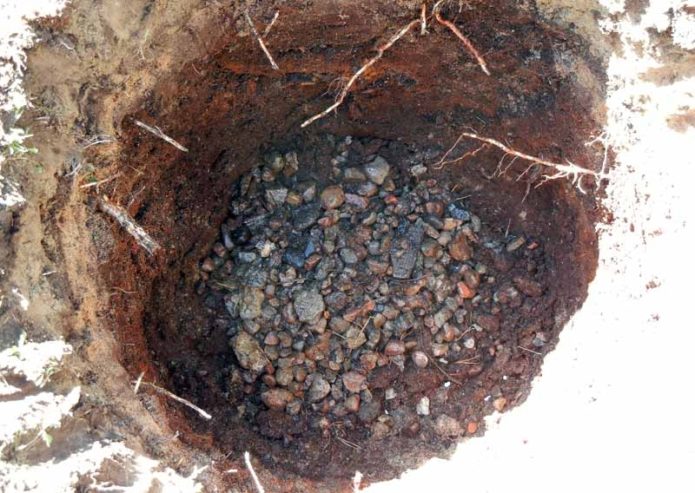
At the bottom of the hawthorn planting pit, a drainage layer is required so that moisture does not stagnate at the roots
The planting procedure itself is similar to that for any fruit trees and berry bushes. The main thing to watch out for is not to deepen the root collar. It should be located 4–5 cm above the ground. The planted hawthorn is watered abundantly, the near-stem circle is mulched, creating a layer at least 5-7 cm thick. Existing shoots are cut off, leaving "hemp" 10-12 cm high with 2-3 growth buds. Sawdust, especially conifers, are not suitable as mulch. They greatly acidify the soil.
You can plant hawthorn both in spring and autumn. For a plant, this does not really matter, so you need to focus on the climate in the region. It usually takes a culture 2.5–3 months to adapt to new habitat conditions. Therefore, if frosts are not expected during this time, autumn planting is also suitable. In the spring you will have to wait for the soil at a depth of about 10 cm to warm up to 8–10 ° C. Plants planted at this time need abundant watering so that their roots do not dry out.
When choosing a place, the hawthorn is planted away from other plants from the Pink family. He suffers from the same diseases as apple, pear, cherry, plum.
Crop care recommendations
Hawthorn care is simple. If it is intended only for garden decoration, it is believed that it can simply be planted and forgotten about it. But those who want to regularly receive a bountiful harvest should still devote a little time and effort to the culture. All care consists in watering, fertilizing, thinning the crown, keeping the tree trunk clean.
In the first year after planting, the hawthorn is not fed. The plant has enough nutrients introduced into the planting hole during its preparation. From the second season to the first fruiting, root dressing is carried out twice. When the leaves bloom, the hawthorn is watered with a solution of any complex fertilizer for berry bushes (Zdraven, Dobraya Sila, Kemira-Lux, Master). After harvesting, 10 l of water is diluted with 20-25 g of superphosphate and potassium sulfate. Also, special phosphorus-potassium fertilizers without nitrogen content (ABA, Autumn) or an infusion of wood ash are suitable.
Fruiting trees are fed before flowering by watering with a solution of carbamide or ammonium sulfate (10-15 g per 10 l), and during or immediately after it - with an infusion of fresh cow dung, bird droppings, nettle leaves or dandelion diluted with water. The rate increases from 20-30 liters of solution per bush to 30-40 liters. During the season hawthorn can be sprayed 3-4 times with any biostimulant (Zircon, Emistim, Heteroauxin).
Thanks to the developed root system, the hawthorn can do without watering at all, drawing the necessary moisture from the soil. Only young plants that have not yet grown long enough roots need additional watering in extreme heat. They are watered every 7-10 days, spending 20-30 liters per bush. To retain moisture in the soil, after each procedure, the trunk circle is loosened and mulched. If watering is not carried out, the soil is loosened every 2-3 weeks. The mulch layer is refilled as needed.
A plant tolerates a moisture deficiency much easier than an excess of moisture. If a "swamp" forms at the roots, they begin to rot very quickly.
Pruning for hawthorns is a must. The plant has a very dense crown. It is carried out twice a year, in spring and autumn, always at a positive temperature. It tolerates the procedure well, so the bush can be given any, most bizarre configuration. It is imperative to get rid of broken, dried, deformed, weak, thickening shoots, as well as from poorly located branches growing downward or inward, intertwining with each other. When trimming hedges, any existing side shoots are shortened by a third to stimulate more intensive branching. Shoots over 15 years old, as a rule, do not bear fruit, so they are cut to the point of growth, rejuvenating the plant.
Hawthorn is frost-resistant, so adult plants do not need a special shelter for the winter. Young seedlings under the age of five can be covered with straw, shavings or dead leaves. If dimensions permit, they are put on cardboard boxes or wrapped in several layers of air-permeable covering material.
Video: tips for caring for hawthorn
Hawthorn breeding methods
Amateur gardeners mainly propagate hawthorn vegetatively. Germinating seeds takes a lot of time and effort, while not guaranteeing the preservation of varietal traits, especially in varieties bred by selection.
Germinating seeds
Hawthorn seeds are extracted from a greenish unripe fruit. Their shell is tough, dense, so the emergence of seedlings takes 1.5–2 years. No more than 50% of the planted seeds germinate. Stratification will help speed up the process and increase germination:
- Soak the seeds for 3-5 minutes in a 2-3% solution of sulfuric acid, rinse in cool running water. During the winter, they should be kept at a temperature of 4–5 ° C and sown in early spring.
- Keep the seeds at a temperature of about 20 ° C for 4 months, then lower it to 5–6 ° C for six months. Sow in the fall.
There is another, less time-consuming method of pre-planting. The collected seeds are poured with warm water for three days, then the shell is scratched with a nail file, file, sandpaper (the so-called scarification). The planting material is dried, poured into a 1% solution of any biostimulator for another two days and immediately sown into the ground.
Seedlings appear very unevenly. Seedling care consists in loosening, watering and regular feeding. They must be protected from direct sunlight. When they grow to 50-60 cm, all formed shoots are cut to 15-20 cm, stimulating branching. You can generally leave 2–3 of the most developed and strongest branches, and remove the rest to the point of growth.
Video: description of the seed stratification procedure
Other methods
Of the vegetative propagation methods of hawthorn, root cuttings or layering are most often used. Green apical cuttings take root very poorly, even if treated with special preparations.
Root cutting is a piece of root 8–10 cm long and about 18–20 mm thick. They are buried in a greenhouse or greenhouse at an angle of 40–45 ° C, with the thick end up. About 2 cm of the cutting should remain on the surface. The procedure is carried out both in autumn and spring.
In order for layering to appear, one or several low-growing young branches are placed in pre-dug trenches 3-5 cm deep, fixing in this position. Furrows are covered with humus, during the summer they are watered abundantly. By the fall, each shoot should produce 3–7 seedlings. They are carefully separated from the mother plant and transplanted to a permanent place.
If you cover with earth not the entire shoot, but its middle, you will get only one new plant, but it is developed and powerful.
Experienced gardeners also practice hawthorn grafting. This method is most often used for the propagation of rare valuable varieties and hybrids. The rootstock is the common or monopestile hawthorn, although any naturally occurring variety will do. The best time for the procedure is August.
The graft (a twig of hawthorn about 20 cm long) and the stock should be approximately the same in diameter. Oblique cuts are made on them, combined and securely fixed in this position, wrapping with adhesive plaster, electrical tape, polyethylene or special grafting tape. If the procedure is successful, new leaves should appear on the scion next spring. In this case, all side shoots below the grafting site are cut to the growing point.
A more difficult option is budding. In this case, not a whole branch is used as a scion, but one growth bud. It is cut off along with a layer of surrounding tissue, trying to touch it as little as possible in the process. The resulting "shield" 3-4 cm in diameter and 2-3 mm thick is inserted into an incision in the rootstock bark in the shape of a T or X. In the spring this bud should give a new shoot. Then the fixing structure can be removed.
Diseases and pests typical for crops, their control
Hawthorn, like all Rosaceae, suffers from many diseases and pests. Although it has good immunity, it is relatively rarely infected when planted away from plants from a similar family. Nevertheless, the bushes should be regularly examined for suspicious symptoms, and if any signs are found, take all necessary measures. The sooner you start fighting a disease or pest, the easier it will be to deal with the problem.
Hawthorn pests are attacked by:
- Apple fruit sawfly. Females lay their eggs in cracks in the bark, which they made cuts in the tissues of the leaf. The larvae eat them from the inside, polluting them with excrement. For prevention in early spring, sticky belts are put on the trees, and special pheromone traps are installed nearby. Hawthorn with unblown leaves is treated with Karbofos, Metaphos. During the season, the hawthorn is sprayed with an infusion of chamomile, tansy, pine needles every 2-3 weeks. To cope with the pest, apply Phosphamide, Karate, Arrivo.
- Apple blossom beetle. Females lay eggs in flower buds, "sticking" them. Damaged buds turn gray, do not open. The larvae eat them from the inside, move to other buds. In early spring, when the beetles have not yet woken up from hibernation, the bush, under which newspapers or cloth are laid, must be vigorously shaken several times. The procedure is repeated every 2–3 days until the leaves appear. Swollen leaf and flower buds are sprayed with Decis, Fufanon, Novaktion. From folk remedies, you can use infusions of tobacco crumbs, calendula, onion husks. To combat the pest, Karbofos, Kinmiks are used.
- Cherry weevil. The bugs feed on flower and leaf buds, young leaves. Females lay eggs in fruit ovaries, larvae eat their flesh from the inside. Prevention and control measures are the same as with the flower beetle.
- Stem gall midge. The pest lays eggs in cracks in the bark, the larvae eat away the tissue of the shoots from the inside. As a result, the branches become very fragile, break easily, dry out and die. Gall midge does not like pungent odors, so any spicy herbs, onions, garlic can be planted next to the hawthorn. Good prevention is deep loosening and mulching of the soil. During the season, the bushes are sprayed with infusion of dandelion leaves or roots, bird cherry leaves, wormwood greens every 10-15 days. For the fight, the drugs Calypso, Mospilan, Iskra-M, Arrivo are used.
- Currant kidney mite. Females lay eggs in leaf buds. They dramatically increase in size and deform. For prevention, in early spring, the bushes are watered with hot (85–90 ° C) water, trying to evenly treat all branches with either a solution of colloidal sulfur (10 g per liter of water). During the season, hawthorn is sprayed weekly with infusion of garlic, strong black tea or decoction of walnut shells. To cope with a tick, which is not an insect, special preparations are used - acaricides (Apollo, Vertimek, Oberon, Omite).
- Mealybug. Leaves and shoots are covered with shreds of whitish "fluffy" plaque, similar to cotton wool. They become sticky to the touch and dry. Visible traces are erased by spraying the bush with lather of household or green potassium soap, and then with warm water. If there are still few pests, folk remedies help well - an infusion of onion or garlic gruel, an alcoholic tincture of calendula, a decoction of cyclamen tubers. In severe cases, Aktara, Konfidor-Maxi, Tanrek, Fitoverm are used.
- Aphid. Colonies of small insects stick to the tops of the shoots, young leaves, buds and fruit ovaries. Damaged plant parts discolor, dry out and fall off. Aphids do not like strong odors, therefore marigolds, coriander, mint, lavender are planted next to the hawthorn. For prevention, you can use an infusion of arrows of onions, garlic, orange peel, tomato leaves, hot pepper, and so on.They also help to cope with the problem if it is noticed on time, only the bushes will have to be sprayed not once every 1.5-2 weeks, but 3-4 times a day. In the absence of effect, Biotlin, Inta-Vir, Iskra-Bio, Admiral are used.
- Shield. Leaves and branches are covered with rounded grayish-brown growths that gradually increase in volume. The tissues around them take on an unnatural reddish-yellow hue. Visible pests are removed from the bush by pretreating it with soapy foam with the addition of alcohol (10 ml per 1 liter). Folk remedies are ineffective, therefore, in order not to waste time, it is better to immediately use chemicals - Actellik, Fosbecid, Fufanon.
- Moth. The main damage to the bushes is caused by caterpillars, feeding on leaves and gnawing the pulp of unripe fruits. To combat adults, trapping sticky belts, homemade traps (filled with honey diluted with water, jam, and sugar syrup containers), Lepidocide and Bitoxibacillin preparations are used. Caterpillars are destroyed with Zolone, Neoxin, Fitoverm.
- Apple sapwood. Beetles make moves in the tissues of the shoots, the wood crumbles, the branches break, and gum flow begins. For prevention, after the end of flowering and after another 14 days, the hawthorn is sprayed with the preparations Vector, Aktara, Confidor-Maxi. To combat sapwood, Decis, Sherpa, Arrivo are used.
- Nematode. Pests lay eggs in the tissues of the plant roots. They become covered with spherical growths of different sizes, turn black. The hawthorn bush stops developing, as it does not receive sufficient nutrition. For prophylaxis in early spring, the soil in the trunk circle is watered with hot (45–50 ° C) water or infusion of chicken manure diluted with water 1:12. During digging, wood ash and onion husks are introduced into the soil. To combat the nematode, drugs Nemabakt, Heterofos are used.
Photo gallery: what pests dangerous for hawthorn look like
- Apple fruit sawfly larvae eat away leaf tissue from the inside
- Apple flower beetle can rob a grower of a significant portion of the crop
- The cherry weevil is a cute-looking bug, but this does not mean that you do not need to fight with it.
- The main damage to plants is caused by the larvae of the stem gall midge
- Kidneys affected by currant kidney mites grow to the size of a pea
- Mealybug is a pest that affects both garden and indoor plants
- Aphids are one of the most "universal" garden pests; they will not disdain hawthorn either
- Folk remedies in the fight against the scabbard are ineffective, the pest is reliably protected by a durable shell
- Moth caterpillars can eat a hawthorn bush in a matter of days
- The sapwood penetrates the shoots through mechanical damage in the bark
- Plant roots damaged by a nematode cannot provide it with sufficient moisture and nutrients.
Of the diseases, the most dangerous for culture are:
- Powdery mildew. The leaves are covered with spots of a whitish or grayish bloom, similar to scattered flour. Gradually, they darken and thicken, the affected tissues turn yellow and dry. New leaves and shoots grow weak, deformed. For prevention, hawthorn bushes are sprayed with a solution of soda ash, a pale pink solution of potassium permanganate, diluted with water in a ratio of 1:10 with kefir or whey. Having found characteristic symptoms, Acrobat-MC, Fundazol, Previkur, Vitaros are used.
- Brown spotting. The leaves, starting from the lowest ones, are covered with olive spots, gradually changing their shade to brown. The wrong side is covered with a continuous layer of grayish-green bloom. Leaves dry, turn black and fall off. For prevention in early spring, plants and soil in the near-stem circle are sprayed with a 2% solution of copper sulfate or Bordeaux liquid. They use Polykhom, Kaptan, Tsineb to fight.
- Rust of leaves.The reverse side of the leaf is covered with spots of a "fleecy" bloom of a bright yellow-orange color, bulges appear on the front side. Gradually, the plaque changes color to rusty brown, thickens. The leaves turn yellow and fall off. In the spring, before the leaves bloom, the hawthorn is sprayed with a 7% carbamide solution, the swollen buds are treated with 3% copper sulfate. During the season, the plants and soil in the garden are dusted with crushed chalk and wood ash. Any fungicide is used to cope with the disease.
- Root rot. The bases of the shoots darken and become unpleasantly slimy to the touch. The soil becomes covered with mold, spreads a putrid smell. The hawthorn bush stops growing and dies. The plant can be saved only at an early stage of the development of the disease. If it has gone far, the bush is dug up and burned, after disinfecting the soil with a bright pink solution of potassium permanganate or 3% copper sulfate. Having found the first signs, watering is sharply reduced. Sifted wood ash or colloidal sulfur, Alirin-B or Trichodermin granules are added to the soil. The bush is sprayed 3-4 times with a solution of Kuproksat, HOM.
Photo gallery: symptoms of diseases typical of hawthorn
- Powdery mildew on the leaves seems to be a harmless bloom that can be easily erased, but this is by no means the case.
- Brown spot spreads from bottom to top
- Any fungicide can be used to combat leaf rust
- A plant affected by root rot can be saved only if the disease is noticed on time
Hawthorn is a plant that is highly regarded by gardeners for its decorative and useful properties. It is also distinguished by undemanding care and high yield. It is enough to devote very little time and effort to culture, and it will “thank” the gardener with abundant flowering and a rich harvest of berries.
